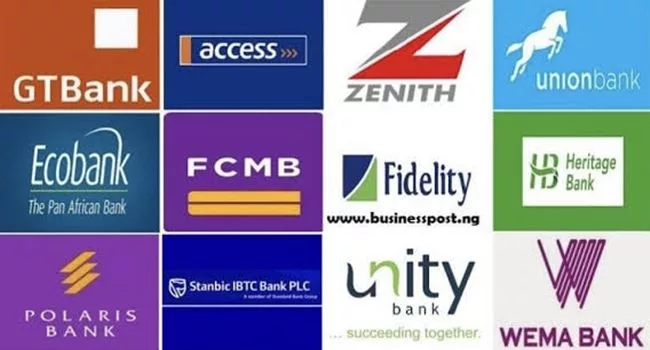How to Easily Recognize Fake Credit Alert in Nigeria
Last updated on August 4th, 2023 at 08:24 pm
One of the common scams in Nigeria is the fake credit alert. In this kind of fraud, you would be sent a credit alert for the payment of a service or item you sold, but the money would not actually show up in your bank account. Later realising you were the victim of a fake credit alert might be demoralising. In order to prevent becoming a victim of this scourge, which is becoming rather common in Nigeria, we’ll be giving you advice in this post on how to verify the validity of a credit alert.
HOW TO DETECT FAKE BANK ALERT FROM THE REAL ONE
Below, we’ll go over how to spot a false credit alert in Nigeria easily.
VERIFY THE BALANCE IN YOUR ACCOUNT
Utilizing your bank’s mobile banking app, online banking portal, or USSD code, you can check your account balance to see if a credit alert you received for a transaction is legitimate. As an alternative, you can get in touch with your account manager and ask for your current bank amount. A false credit alert will never affect your account’s balance. To determine if a credit transaction into your account was successful or not, you must know the exact amount of your last known available balance.
CHECK THE INBOX IN YOUR EMAIL
Another way to recognize fake credit alerts is to check your email in which you used to sign-up for email alerts from your bank. Its normal that you would undoubtedly get notices for each transaction if you signed up for email alerts from your bank. Be cautious to verify that the email address used to send the credit alert to your email is one that is connected to your bank, though. Sometimes these scammers will try to trick you by sending you an email with a similar address to your bank. Therefore, you can visit your bank’s website to validate the email address linked with your bank if you are unsure of what it is.
CHECK YOUR AVAILABLE BALANCE IN THE CREDIT ALERT
Check the available balance part of the notice to see if the bank credit alert you received is legitimate. An actual credit alert would typically include your bank account’s current balance. Let’s illustrate with the following example: If your bank account balance was ₦625,000 and ₦75,000 was transferred to it, your balance on the credit notification for the transaction should be ₦700,000 (you may see some deductions, such as ₦50 for financial transactions above ₦10,000, according to the CBN’s directive to Nigerian banks). Therefore, based on the example given, if the credit notification you receive does not include ₦700,000 (after taking into account the deductions as described above), it is a fake.
USE THE NEAREST ATM
Take your debit card to the nearby automated teller machine (ATM), insert your card, and check your remaining account balance to see if your account was really credited. The credit alert was a scam if your available balance remains the same as it was when it was last known.
ALSO SEE: HOW TO REPORT SCAMMER BANK ACCOUNT
KEEP AN EYE OUT FOR INCONSISTENCIES IN THE CREDIT ALERT
Even while bogus credit alerts attempt to resemble real credit warnings, a detailed examination reveals some differences. To begin with, make sure the SMS’s sender ID matches the one on the genuine credit alert from your bank. It should alert you that the message is fraudulent if the sender ID differs from the one used by your bank. Verify whether the sender ID is capitalised or lowercase. For instance, if you have an account with First Bank of Nigeria, “FIRSTBANK” would be the legitimate sender ID for a credit alert. Therefore, it is a dead giveaway that an SMS is fake and a scam if it comes from “First bank,” “fbn,” or another similar sender when you receive a credit alert.
Spelling, capitalization, or grammar mistakes that stand out should also be watched for. The credit alert is a fraud if it has cut-off sentences, misspellings, poor grammar, odd language use, or awkward sentence structures. Find the discrepancies between the unusual alert you receive and the legitimate credit alert notifications you had previously received by comparing them.
TIPS ON HOW TO AVOID BEING SCAMMED BY FAKE CREDIT ALERTS
Here are some important advice to avoid falling a victim to fake bank credit alerts:
PROVIDE CORRECT INFO
In order to get payment for the goods or services you provide, you are typically required to provide your account number. You should be suspicious of anyone who ask for your phone number or email address in addition to getting paid because neither is necessary for a payment to be deposited into your account.
VISIT BANK OR CALL CUSTOMER CARE
Additionally, make sure you have access to your account’s contact information so you can get confirmation whenever necessary. Having the phone number for your bank’s operations officer, manager, or customer support representatives may also be useful. You can always visit your bank’s website to get the contact information of people who can assist you in circumstances like the possibility of a fraudulent credit alert.
APPLY FOR BANK USSD
You can use your bank’s USSD code to verify the balance of your bank account, as we mentioned before in this post. You would need to submit a formal application at the bank for the USSD service. In order to be able to determine whether a transaction reflects in your bank account or not at any moment, please do so if you haven’t already.
INSTALL BANK APP
Installing your bank’s mobile app on your phone is another crucial step you should take to quickly confirm the validity of a credit alert. However, in order to use the mobile banking service, you must apply. No matter what time of the transaction, including late at night or on the weekend when it could be difficult to reach bank staff, you can use the mobile app to confirm the credit alert.




